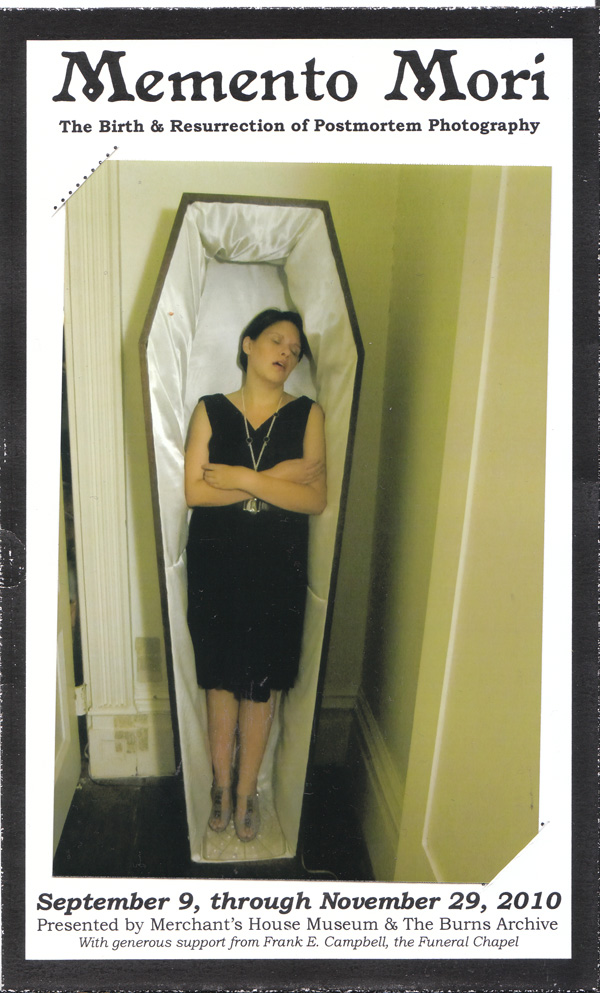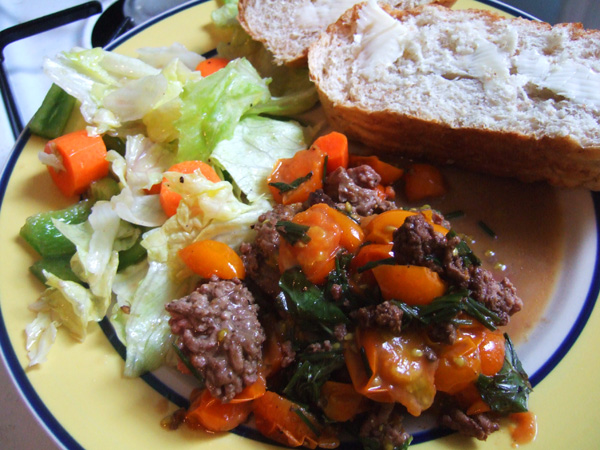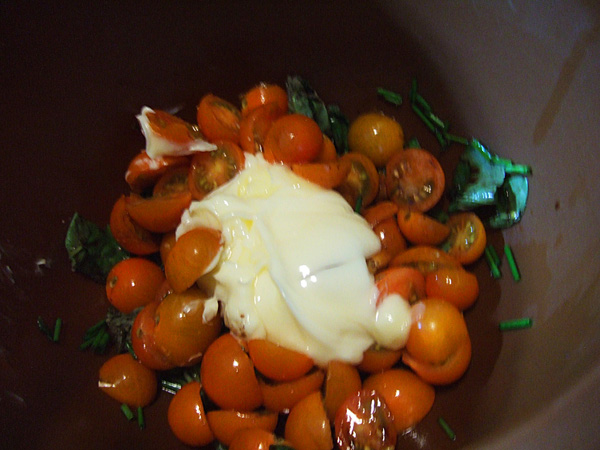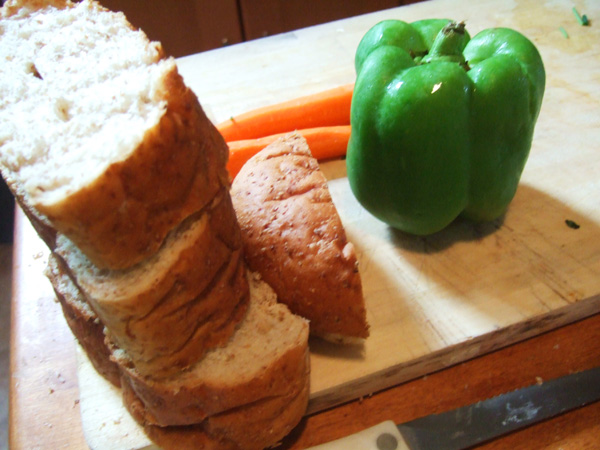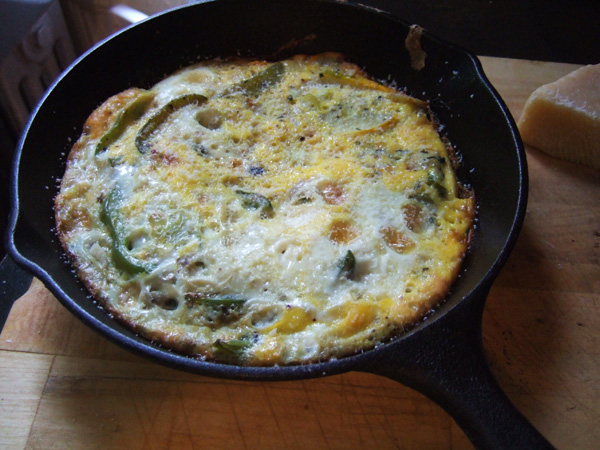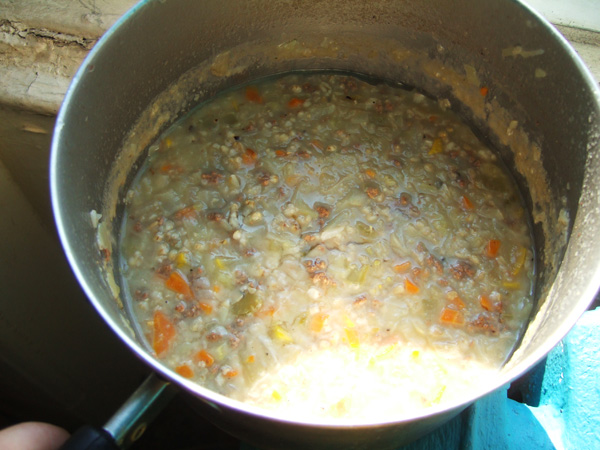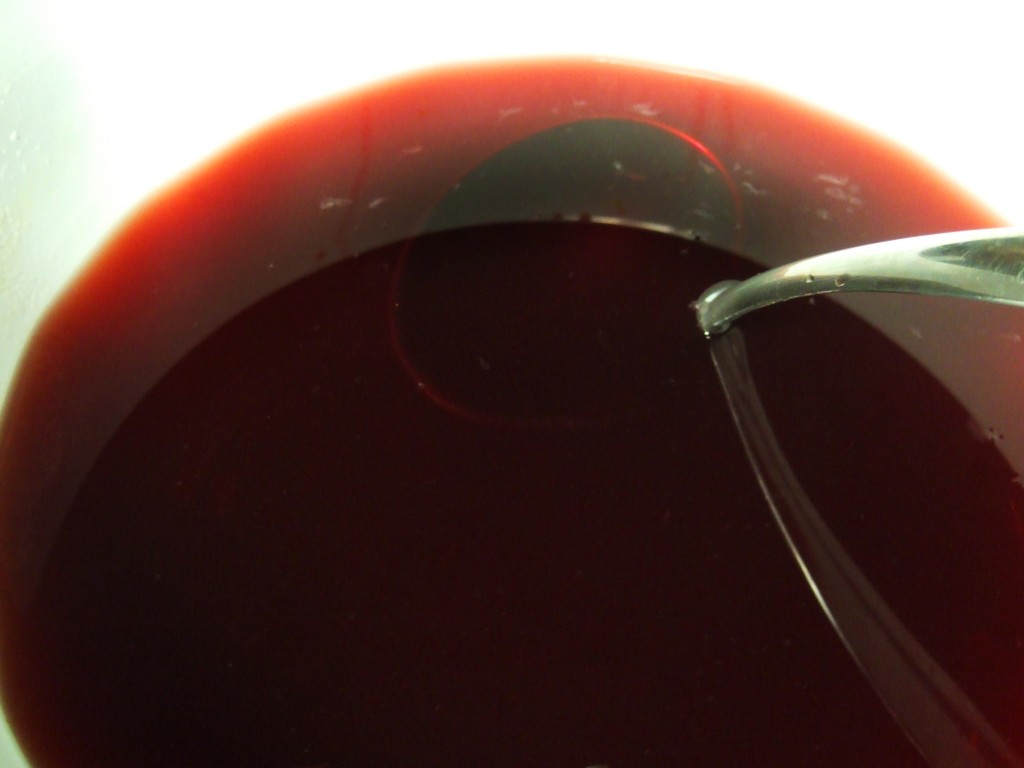 My groceries for a week.
My groceries for a week.
A day of Sludge done with, I was relieved to get into more hearty dishes.  Above, my groceries for the week:, at a cost of $35 in total; including $10 worth of vegetables from my CSA, $5 for some un-homogenized milk from Ronnybrook farms, and the rest spent on bread, cheese, etc.
For breakfast, I had (in Fisher’s words): “…piles of toast, generously buttered, and a bowl of honey or jam, and milk…You can be lavish because the meal is so inexpensive. Â You can have fun, because there is no trotting around with fried eggs and mussy dishes and grease in the pan and a lingeringly unpleasant smell in the air.” Â Toast it was! Deep, brown, whole wheat bread, fresh from my local bakery. Â Buttered, with a schmear of honey, and a glass of milk. Â Done.
For lunch, I consulted the chapter “How to Boil Water” for Fisher’s lunch recommendation: “a heartening, ample soup.”  With a drawer full of vegetables, I decided to make “A Basic Minestrone.”  I was interested in Fisher’s interpretation of the classic Italian dish. “Probably the most satisfying soup in the world,” she says, ” for people who are hungry, as well as for those who are tired or worried or cross or in debt or in a moderate amount of pain or in love, or in robust health, or in any kind of business hugmuggery, is minestrone.”  Sounds reassuring, doesn’t it?
***
A Basic Minestrone
From How to Cook a Wolf by MFK Fisher (1942).
1/4 bacon or salt pork or fat ham.
1 small onion
1 stalk celery
1 handful fresh, chopped parsley
2 cups tomatoes, peeled
1 tsp each oregano and basil
Any other vegetables you have on hand
1 cup of dry pasta
Salt and pepper
I cut the fattiest pieces off a ham steak I bought for dinner later this week. Â I put this fat in a large soup pot, and let it render before I added the onion to soften. Â Ham fat as a soup base? Â Delicious. Â Then in went the celery, parsley, and herbs, and left to soften for 10 minutes. Â Last, the tomato (I used canned), stirred constantly until heated through. Â Then, I added two quarts of water.
At this point, Fisher recommends adding whatever vegetable you have on hand (but never beets!); I added 1/2 a small, green cabbage; 1 potato; 2 cloves garlic; 1/2 an acorn squash; 2 carrots; 2 stalks celery; and a handful of kale. Â Fisher recommends chopping these fine; then mashing them with a potato masher…While I can’t explain Fisher’s obsession with smooshed food, I decided to simply leave the veggies finely chopped.
I brought the soup pot to a boil, then turned it down to a simmer, and let it cook until the vegetables were tender, about an hour.
When deprived of seasoning for a time, one forgets the richness it adds to a dish. Â As the soup simmered, it smelled like sweet summer days and freshly cut lawns: green and spicy.
20 minutes before serving, I added a cup of dried macaronis.  Then,  just before ladling it into bowls, Fisher says to “Churn the soup ferociously, and serve over thin toasted bread or not, but always with a good ample bowl of grated dry cheese to sprinkle upon each serving, as the pleased human who eats it may desire.”  I adorned my soup with grated Romano.
The soup, it turns out, was o.k. Â I’ve had better; I feel my addition of kale instead of spinach wasn’t such a good choice. Â It made the soup olive green and a little stinky.
But the soup wasn’t bad, either. It was warm and filling, and I felt ready for the rest of my day.
Tonight, we’ll continue with our Italian theme for the day, with a vegetable Frittata.


